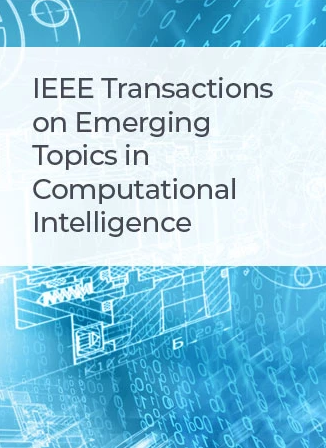Adaptive Strategies and its Application in the Mittag-Leffler Synchronization of Delayed Fractional-Order Complex-Valued Reaction-Diffusion Neural Networks
IF 5.3
3区 计算机科学
Q1 COMPUTER SCIENCE, ARTIFICIAL INTELLIGENCE
IEEE Transactions on Emerging Topics in Computational Intelligence
Pub Date : 2024-04-01
DOI:10.1109/TETCI.2024.3375450
引用次数: 0
Abstract
This paper addresses the Mittag-Leffler synchronization problem of fractional-order reaction-diffusion complex-valued neural networks (FRDCVNNs) with delays. New Mittag-Leffler synchronization (MLS) criteria in the form of the延迟分阶复值反应扩散神经网络的自适应策略及其在 Mittag-Leffler 同步中的应用
本文探讨了带延迟的分数阶反应扩散复值神经网络(FRDCVNN)的米塔格-勒弗勒同步问题。针对从驱动-响应模型导出的误差模型,以 $p$ 准则的形式构建了新的 Mittag-Leffler 同步 (MLS) 准则。在自适应反馈控制器的设计中,考虑了在 $p$ norm 技术框架下的 Lyapunov 方法,并给出了保证所考虑模型 MLS 的不太保守的代数条件。此外,还利用自适应控制研究了无反应扩散效应模型的 MLS。最后,通过一个实例验证了所提出的控制方案。为了证明所提技术相对于现有方法的优势和优越性,我们考虑了一种基于 FRDCVNNs MLS 的图像加密方法,并使用所提方法进行了求解。
本文章由计算机程序翻译,如有差异,请以英文原文为准。
求助全文
约1分钟内获得全文
求助全文
来源期刊

IEEE Transactions on Emerging Topics in Computational Intelligence
Mathematics-Control and Optimization
CiteScore
10.30
自引率
7.50%
发文量
147
期刊介绍:
The IEEE Transactions on Emerging Topics in Computational Intelligence (TETCI) publishes original articles on emerging aspects of computational intelligence, including theory, applications, and surveys.
TETCI is an electronics only publication. TETCI publishes six issues per year.
Authors are encouraged to submit manuscripts in any emerging topic in computational intelligence, especially nature-inspired computing topics not covered by other IEEE Computational Intelligence Society journals. A few such illustrative examples are glial cell networks, computational neuroscience, Brain Computer Interface, ambient intelligence, non-fuzzy computing with words, artificial life, cultural learning, artificial endocrine networks, social reasoning, artificial hormone networks, computational intelligence for the IoT and Smart-X technologies.
 求助内容:
求助内容: 应助结果提醒方式:
应助结果提醒方式:


